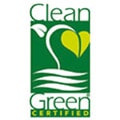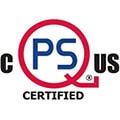OZONE FREE VS. OZONE GENERATING LAMPS:
?HOW CAN EACH HELP YOUR GROW OPERATION
?HOW CAN EACH HELP YOUR GROW OPERATION
Being in the Air Quality industry for the past 10 years, the one misconception I run into most frequently is the lack of understanding between ozone producing lamps and non-ozone producing lamps. Many companies I talk to are under the impression that all UV lamps are ozone producing.
There are two types of material used to make UV lamps, soft glass and Quartz. Quartz is the predominantly used lamp and has an excellent 90% or higher UV transmission. The Quartz lamp is made in two light frequencies – UV-C 254nm and UV-V 185nm.
Lamps that produce UV light at 185nm allow ozone to be created as the energy released is strong enough to break the double covalent bond of (O2) to create (O-), which is very unstable and will bond with the closest (O2) molecule to create ozone (O3).
Lamps that produce UV light at 254nm do not create ozone because the energy released is not strong enough to break (O2) into (O-), thus this lamp is referred to as the germicidal UV-C lamp.
Specific to the Cannabis grower, there is a difference in using each type of lamp.
UV-C or germicidal UV lamps do not release anything into the airstream and into the growing area. This is key when using an air disinfection product. Do not release anything into the growing area such as ozone, ions, plasma or hydroxyl radicals as they will damage your plant and terpenes. I understand that UV-C lamps were used as a handheld device in the past for spot disinfection. This is temporary and can be extremely time consuming. It is much more efficient to utilize germicidal UV-C lamps in the HVAC ductwork or in a stand-alone fan powered unit that can achieve a high rate of air changes per hour. The goal of germicidal UV-C is to lower the level of airborne contamination in the growing room to allow the plant to focus on growing and not on fighting infections like Powdery Mildew.
The proper use of ozone lamps for an indoor grower would be to utilize them during the cleaning process. If you are able to have access to an empty room in between harvest cycles, it is strongly recommended that a deep cleaning of all surfaces be accomplished as a first protocol. Second, would be to allow an UV ozone system to operate in the sealed room overnight. The UV ozone system will destroy any remaining surface bacteria or fungus the physically cleaning process may have missed. One overnight session should be sufficient and be sure to let the room exhaust or air out for a few hours before entering or introducing plants back into the room.
Keith Jordan
VP Sales South Central US
Sanuvox Technologies





